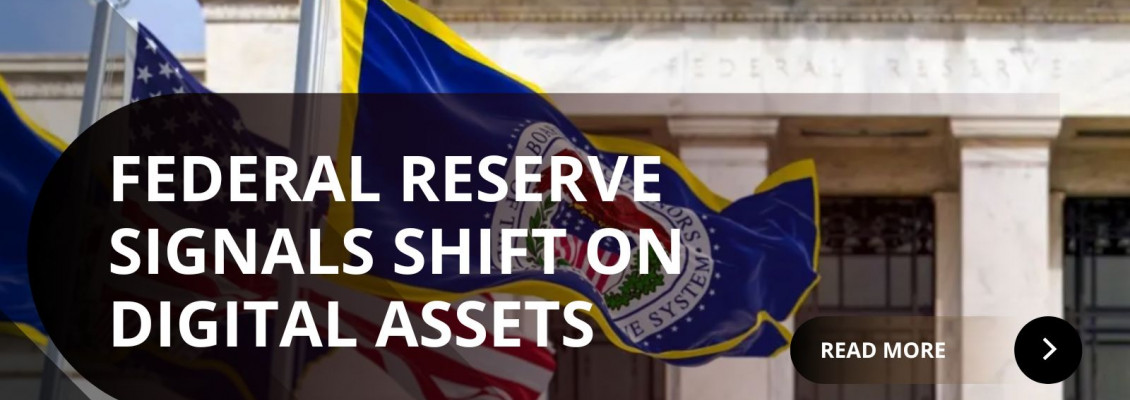
In recent remarks, Fed Governor Christopher Waller has signaled that the U.S. central bank is becoming more accommodating toward digital assets, stablecoins, and payments innovation. This marks a notable change in tone. Waller proposed a “skinny master account” at the Fed for payment innovators, and other reports flesh out the broader implications.
What changed?
-
Waller has publicly stated that crypto technologies such as smart contracts, tokenization, and distributed ledgers are nothing to be afraid of.
-
He says the payments ecosystem is undergoing a “technology driven revolution,” and that the Fed must keep pace.
-
The Fed appears to be shifting from a strictly cautious stance toward digital asset integration in payments, toward an openness to engage more with innovators in the fintech and crypto space.
-
Waller emphasized the complementary roles of the private sector, which drives innovation, and the Fed, which provides core infrastructure and oversight.
The “Skinny Master Account” Proposal
One of the more concrete proposals discussed by Waller is the idea of a streamlined “payment account” or “skinny master account” at the Fed. This would be a limited access account for non-bank payment innovators and fintechs, granting them access to core payment services.
Key features of this account
-
The account would not grant full bank level access. For example, no interest, no overdrafts, and no access to the Fed’s emergency lending facilities.
-
It would undergo a simpler review process than a traditional bank master account.
-
The aim is to give payment innovators and non-bank financial firms more direct access to Fed payment infrastructure, instead of having to rely on a bank intermediary.
-
Waller describes this as a way to reflect the new reality of the faster moving payments landscape and the evolving types of providers.
Why it matters
-
It signals that the Fed is willing to adapt its infrastructure and access rules to accommodate newer players such as fintechs, stablecoin issuers, and crypto enabled payment firms.
-
Potentially lowers the barrier for such firms to interact directly with the Fed’s payments system, which has traditionally been reserved for banks.
-
Could increase competition and innovation in payments, perhaps improving efficiency, speed, and cost, especially as stablecoins and digital asset rails gain traction.
-
But it also raises regulatory and risk management questions about how the Fed maintains safety, soundness, and oversight when opening access more broadly.
Crypto, Stablecoins and Payments: Key Themes in Waller’s Remarks
Embracing innovation
Waller has made repeated comments that highlight his belief that crypto technologies are not inherently risky simply because they are new. He stated that smart contracts, tokenization, and distributed ledgers are just technologies, and if they lead to more useful ways to transact, the Fed should consider adopting them.
Stablecoins as “synthetic dollars”
Waller described how stablecoins might act as synthetic representations of the dollar. He noted that stablecoins must demonstrate clear use cases and commercial viability to succeed. He also pointed out that stablecoins could provide access to U.S. dollars for users in high-inflation countries or without easy banking access, and could help maintain the dollar’s role internationally.
Research into tokenization, smart contracts and AI
Waller revealed the Fed is doing technical research on innovations such as tokenization, smart contracts, and AI in payments. He explained that while the Fed may never directly adopt these technologies, there is no reason not to explore them.
The Fed’s changing regulatory stance
-
The Fed has ended its “novel activities supervision program” for crypto related banking activities.
-
Earlier in 2025, it withdrew a 2022 guidance that discouraged banks from participating in crypto and stablecoin activities.
-
Waller has emphasized that the private sector should lead payment innovation, with government intervention limited to areas where market inefficiencies exist.
Implications and Challenges
Opportunities
-
For fintechs, payment innovators, and crypto firms: the proposed account could provide more direct access to Fed rails, potentially lowering costs and increasing speed.
-
For the payments ecosystem: embracing tokenization, smart contracts, and stablecoins could improve efficiency, reduce friction, and support cross-border flows.
-
For the dollar’s role globally: stablecoins denominated in U.S. dollars could help reinforce the dollar as the global settlement currency, especially in emerging markets.
Risks and considerations
-
Safety and soundness: Extending access to non-bank firms raises questions about oversight, liquidity, fraud, cybersecurity, and systemic risk.
-
Regulatory clarity: While the tone is more open, many legal, regulatory, and compliance frameworks remain unresolved, including how stablecoins are treated and how payment innovators are supervised.
-
Central bank digital currency: Waller and others remain cautious about a full-blown U.S. CBDC, so innovation may happen in private rails rather than through a government issued digital dollar.
-
Inclusivity vs exclusivity: There will likely be eligibility criteria for these “skinny” accounts, meaning not all innovators will have equal access.
What to Watch
-
Whether the Fed publishes formal guidelines or a pilot program for the “skinny master account.”
-
How banks and fintechs respond, and whether more firms apply for direct Fed access.
-
What regulatory developments affect stablecoins and digital assets, such as new legislation or SEC rules.
-
How this affects real world payment innovation, including cross-border payments, retail stablecoin usage, and tokenization of assets.
-
Whether the Fed adopts any of the tokenization and AI research findings into its infrastructure or policies.
Summary
Governor Christopher Waller’s recent comments reinforce a pivot in the Fed’s posture toward digital assets and payments innovation. The proposed “skinny master account” signals a willingness to provide payment innovators, including fintechs and possibly crypto enabled firms, more direct access to Fed infrastructure in a limited way. This comes alongside an overarching message: new technologies such as stablecoins, smart contracts, and tokenization are not to be feared. They may play a transformative role in the payments system. That said, the transition carries regulatory, supervisory, and structural risks that the Fed is clearly aware of.

Leave a Comment